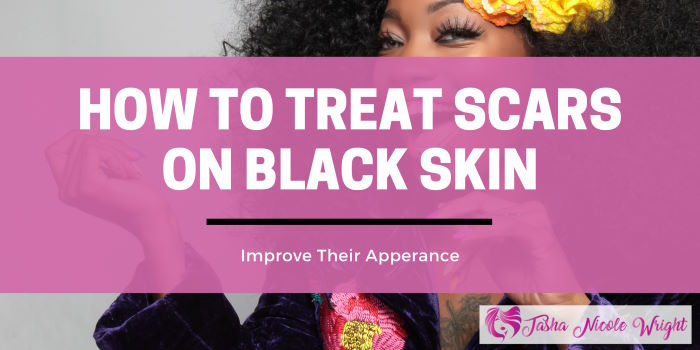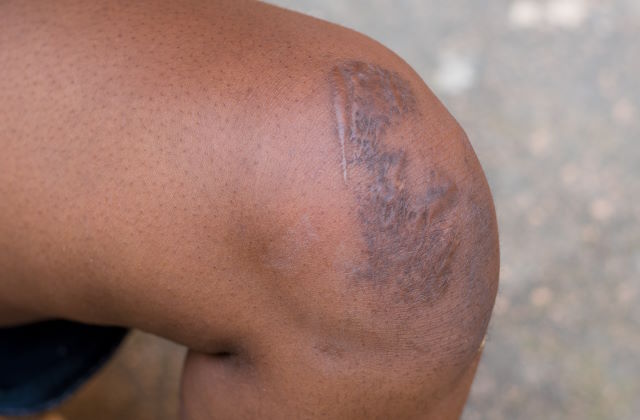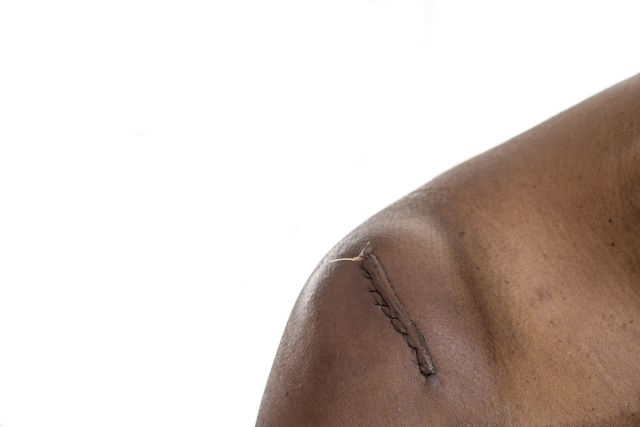
Scarring on black skin is often associated with causes such as acne, eczema, or wounds. These visible scars of often detrimental to many people’s self-esteem.
The treatment of scars is also a highly personalized process as every scar, the individual’s body, and skin type can be different. It is essential to exercise caution when treating scars on dark skin so that the risk of additional scarring is minimized.
Fortunately, there are several remedies and treatments available that have been proven to effectively reduce scarring and enhance the appearance of skin scarring.
Home Remedies
Aloe Vera
In 2018, a review of various studies discovered that the presence of the Aloesin compound in aloe vera could assist in decreasing hyperpigmentation associated with acne scars and dark spots. Aloesin is known to curb the excessive production of melanin, a pigment that can darken and make acne scarring more prominent.
Aloe vera is useful in reducing the size of keloid scars, minimizing soreness and inflammation, and aiding in the healing of scar tissue.
To ensure maximum effectiveness, it’s recommended to use high-quality Aloe Vera. If possible, opt for a potted Aloe Vera plant to ensure freshness. Simply break off a leaf and remove the outer layer to reveal the gel for use.
Honey
Honey is a natural moisturizer that contains enzymes, vitamins, and minerals, making it an excellent all-around healing product. For added benefits, mix two tablespoons of honey with a teaspoon of cinnamon and massage the mixture into the scars.
Coconut Oil
Coconut oil’s moisturizing properties can be great for your hair and skin. Some of its active ingredients are even thought to help minimize scars.
Organic virgin coconut oil is a versatile healing product that works well as a moisturizer. To use, scrape out a quarter teaspoon of the hardened oil and allow it to warm up to its liquid form. Then, apply it to the affected areas and leave it on for approximately 30 minutes.

Clinical Solutions
Microneedling
Microneedling is a treatment that can be used to address all types of scarring. The tiny needles used in the procedure create small punctures or micro-wounds, which break down tough, old scar tissue strands.
This fragmentation process encourages the healing of wounds. It stimulates the production of collagen, elastin, and hyaluronic acid, the building blocks of healthy skin and tissue. Thread eye lift micro-needling is an effective treatment of dark circles around the eyes
Chemical Peels
Superficial and medium peels are effective in treating textured acne scars including superficial icepick scars, boxcar scars, and rolling scars. This can also be customized to break down damaged tissue and encourage remodeling and resurfacing of the skin, making them a good choice for individuals with black skin. Peels stimulate collagen production to plump up the dermal layers, which can improve the volume and health of the skin and make scars less apparent.
While peels may not always be the best option for hypertrophic scars and keloid scarring, they are highly effective in correcting hyperpigmentation by removing sluggish skin cells that contain concentrated pigment and encouraging better skin cell renewal to reveal fresher, more even-toned skin cells.
Dermal Fillers
Botox injections, also known as Botulinum toxin, are a viable treatment option for hypertrophic and keloid scarring. They work by decreasing muscle activity, allowing for proper healing of the wound and maturation of collagen without any tension that could hinder the healing process. This method is particularly useful for facial scarring where there is significant movement of facial muscles.

On the other hand, dermal fillers are a suitable choice for atrophic scarring. By injecting the fillers directly beneath the scar, the depressions in the skin can be filled, effectively treating the scars.
Light Therapy
Laser and light therapy can be used as a standalone or complementary treatment to resurface damaged scar tissue and help to reduce its visibility. Both ablative and non-ablative laser treatments are effective in reducing most types of scars. This includes raised (hypertrophic) scars, indented (atrophic) scars, hyperpigmentation, hypopigmentation, and also stretch marks.
Low-level light therapy, such as LED and other techniques, can be employed immediately following an injury to aid in wound healing, decrease inflammation, and mitigate the severity of any resulting scars.
Topical Creams
Developing an appropriate skincare routine can help to enhance the appearance of scars by supporting the skin before and after injury.
Cosmeceutical skincare ingredients found in topical creams can help with skin hydration, fortify the protective barrier, improve its structure, and decrease stress within the epidermis. Some examples are Panthenol, Vitamin C, Glycolic Acid, Niacinamide, Lactic Acid, Gluconolactone, Lactobionic Acid, Retinoids, Ferulic Acid, and Resveratrol. Many of these ingredients are also found in topical eye creams for African skin.
Depigmenting agents like Kojic Acid, Liquorice Root, Cysteamine, Resorcinol, Niacinamide, and Tranexamic Acid effectively reduce hyperpigmentation when used over a period of time. This is especially true when they are used in conjunction with a broad-spectrum sunscreen designed to protect against UVA and UVB rays.
Corticosteroid creams have demonstrated success in re-pigmenting the skin, but prolonged long-term use can result in thinning of the skin, which could lead to stretch marks. Therefore, they must be used with caution and under medical supervision. Many skincare products claim to eliminate stretch marks, but at best, they can improve the quality of the skin to make them appear less noticeable.
Silicone Gel
Silicone sheets and gels are useful methods for reducing the severity of scarring as well as itching, and discomfort. They work by boosting hydration in the upper layers of skin, shielding scar tissue from infection, and preventing excessive collagen production caused by an infection in the scar tissue, leading to a more regulated healing process.
Both silicone gel and sheets are available over-the-counter or through a prescription, and studies have demonstrated their efficacy and safety in managing hypertrophic and keloid scarring.
Platelet Rich Therapy (Vampire Facial)
Platelet Rich Therapy (PRP), also known as the “vampire facial,” employs your own blood to aid in healing damaged tissue.
The process entails drawing your blood, separating it into three layers—red blood cells, platelet-rich plasma, and platelet-poor plasma—and using the platelet-rich plasma, which is brimming with multiple growth factors and proteins, to promote healing in the damaged tissue.
While research on this therapy is continually evolving, PRP has been demonstrated to effectively reduce indented (atrophic) scarring, particularly when used in conjunction with laser therapy.
Final Thoughts
These options demonstrate the diversity of scar treatment, including medical solutions such as surgery, injections, pressure therapy, and cryotherapy. Combining various procedures can produce even better, longer-lasting results.
However, it is crucial to prioritize the health of your skin after trauma by maintaining cleanliness, avoiding exposure to heat and infection, moisturizing, and protecting the area. These practices are essential for optimal wound healing and scar management. Additionally, using effective skincare products and receiving in-clinic treatments can further support the skin and refine any remaining scars.

Leave A Comment